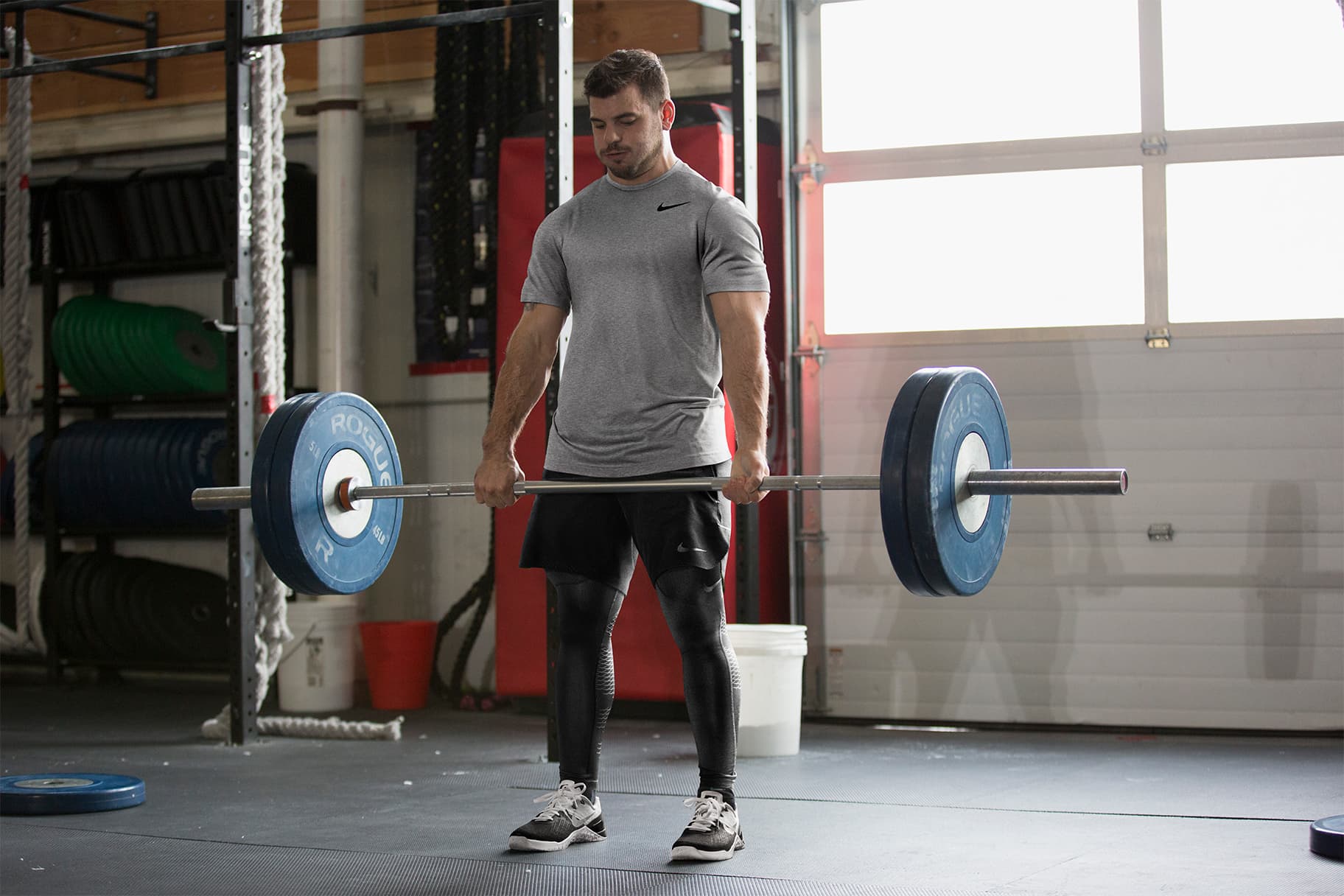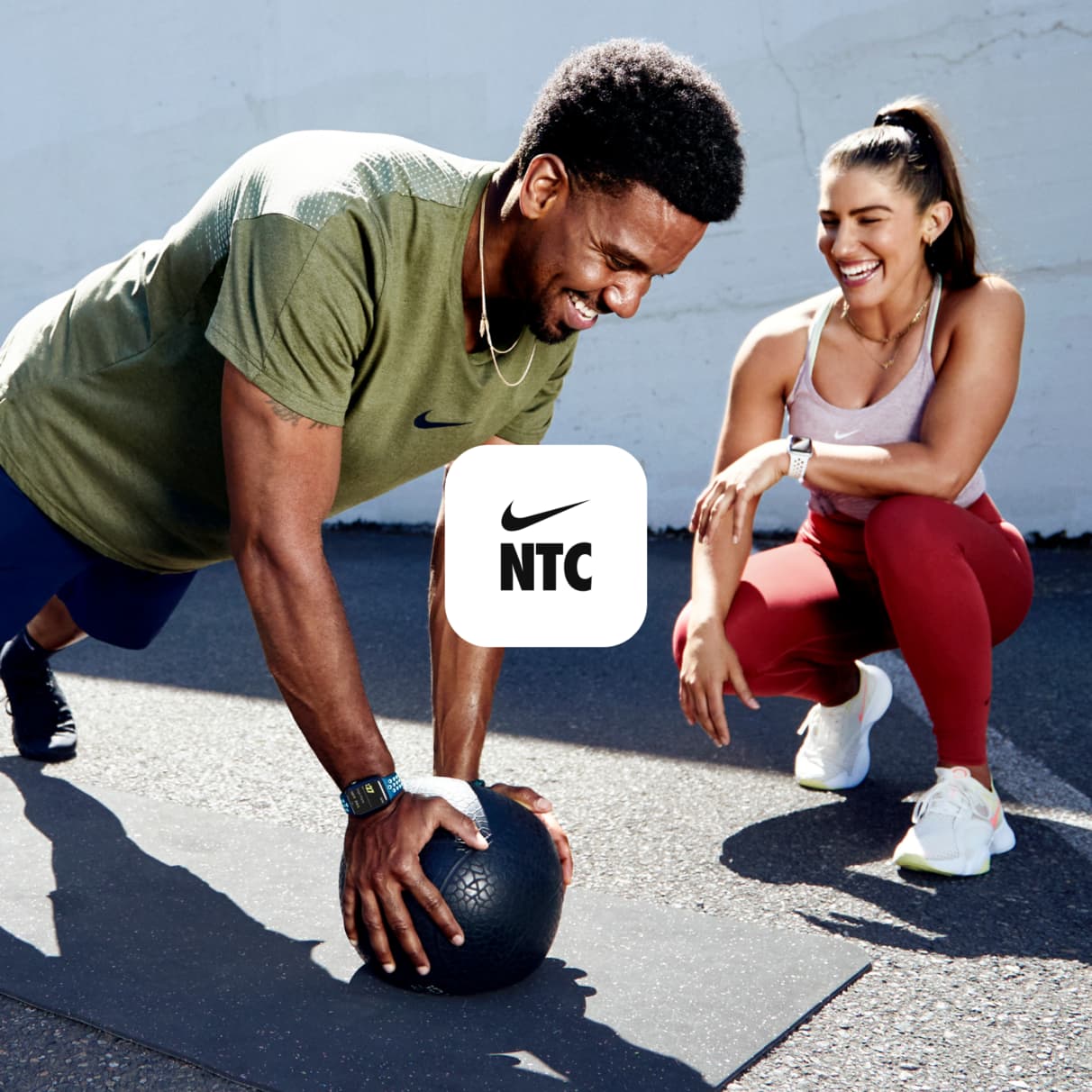What's the Difference Between a Squat and Deadlift — And Which Is Better?
Sports & Activity
Experts explain the difference between the two popular lower-body exercises and which to consider for your next workout.

When it comes to key exercises, squats and deadlifts are commonly in rotation — and for good reason. No matter if you’re doing these moves with your bodyweight or added gym equipment, each exercise is highly effective at building lower body strength.
In fact, you probably do these motions more than you realize, especially with everyday activities like picking up items from the floor or getting into and out of a chair. Because of how important they both are to daily life, Rocky Snyder, C.S.C.S., author of the strength-training guide “Return to Center,” suggests practicing both in order to move well — not just in your workout but also in general. Another important point, he adds, is to start with bodyweight exercises to master the form. (Related: The Best Weights for At-home Workouts!)
"Too often, people just grab weights and attempt to squat or deadlift before the body really knows how to do them properly," he says. "Master the basics and progress methodically."
Here's a look at what both moves bring to a fitness regimen and considerations for which to choose for your next workout.
What's a Squat?
Squats strengthen your legs, core, glutes and back, according to strength and conditioning trainer Reda Elmardi, C.S.C.S. They can improve posture and balance, increase flexibility and build muscle mass, he continues. In one study, researchers found that squatting can build muscle mass and improve body composition, as well as strengthen knee extensors, which can increase jump performance.
Good form: Ideally, a squat should be done with your torso remaining predominately upright and not leaning forward or back, says Snyder. As if you're about to sit in a chair, you keep your feet about hip-distance apart and bend both knees to lower down slowly. Pressure should be maintained across both feet.
"When it comes to proper form with squats, the 'ideal' can vary from one person to the next," says Snyder. "How you move in this position can depend on the position of your joints, especially your hips, as well as potential muscular imbalances."
Modifications: One aspect to consider with squats is that they can be adapted in a number of ways. For example, you can widen your stance and turn your feet out, into a sumo squat. You can also narrow your stance and lift your heels, which puts more tension in your glutes, says Jake Harcoff, C.S.C.S., trainer and certified kinesiologist. Translation: Major booty work.
"This type of squat is my favorite exercise for training the glutes," he says. "If you're newer to exercise, or balance is an issue, you can replicate this movement on a leg press machine."
Another popular variation — especially for the glutes — is the elevated split squat, also called the Bulgarian split squat, says Aaron Leventhal, C.S.C.S., owner of Fit Studios.
"A deadlift is wonderful, but can be challenging to execute with good mechanics and doesn't do a good job of really isolating just the glutes," he says. "I like the split position or lunge shape because it’s easier to keep an upright torso, which makes this manageable for people with mobility issues and lower back issues. Also, it's a single-sided activity, which means you get a chance to work on one glute at a time, which doesn't allow a stronger side to mask a weaker side."
What's a Deadlift?
Deadlifts are compound movements that work your entire body, including your legs, arms, core and shoulders. Standard deadlifts are similar to squats, but instead of bending at the hip and knee joints, you bend at the waist, pushing your hips back and pull a barbell or dumbbells off the ground. One 2020 study found that both the squat and the deadlift resulted in similar improvement in lower-body maximal strength and jump performance.
RELATED: What Nike Shoes Are Best for Deadlifts?
Good form: A deadlift requires some effort to get right, says Elmardi, since you want to be firing up your legs and not loading or straining the muscles in your back. Here's how to perform one — though if you have any questions, always be sure to double-check with a trainer or certified instructor if available.
- Stand straight with your feet shoulder-width apart.
- Begin with a hip hinge to come down to the weight, or to your ankles if you’re doing this as a bodyweight exercise. Maintain a neutral spine, then press your hips back as if there’s a rope around your hips pulling behind you. There should be tension in your hamstrings. Keep hinging forward with a slight bend in your knees until you can grab the barbell. The hip hinge will be how you always return the weight back to the ground.
- Hold the barbell with both hands at arm's length from your body.
- Keep your back naturally arched while keeping your knees slightly bent.
- Squeeze your glutes and hamstrings muscles to lift the weight off the floor.
- Slowly lower the weight down until your hips are almost parallel to the ground.
- Pause briefly before repeating the movement.
Progressions: Although a squat might have more variations for you to mix up your workouts with, you can also modify deadlifts.
For example, a single leg deadlift — where you balance and hinge back on one leg as the other kicks behind and then returns to the working leg as you stand tall — can build your balance, which creates more muscle recruitment, says trainer Noam Tamir, C.S.C.S., owner of TS Fitness in New York.
"I prefer to have a nice bend in the standing leg to focus more on the glute," he adds. "A straighter leg will put more emphasis on the hamstring."
Squat vs. Deadlift: What's the Difference?
Although both the squat and the deadlift bring the lower body muscles to fatigue, there are some notable differences, says Snyder. These include:
- During the deadlift, the hips do not lower up and down but maintain a level position while flexing and traveling back, before extending and moving forward.
- Also with a deadlift, the torso lowers in front of the legs rather than staying upright with minimal movement like in a squat.
- Although both the squat and deadlift focus on the hip’s ability to create a hinge-like action, the squat does so with dynamic participation of the knees and ankles. Whereas the deadlift keeps the knees and ankles secured with minimal movement.
"Some individuals, because of their posture, flexibility, and skeletal makeup, might be better suited for one more than the other," says Snyder. "This is not to say one is better than the other or one should have a higher priority. Both of these movements can offer benefits when executed in the proper manner."
Bottom Line
When it comes to the squat versus deadlift debate, there's no clear winner. Or more perhaps it’s more accurate to say there are no clear losers. Incorporating both of these all-important moves into your fitness routine can give you the benefits of each, along with numerous variations that can keep your workouts fresh.
Words by Elizabeth Millard
For more expert-backed tips, be sure to download the Nike Training Club App!
